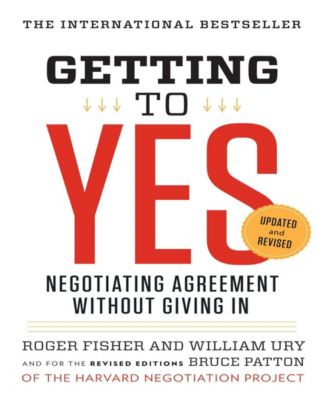Getting to Yes- Negotiating Agreement Without Giving In by Roger Fisher
Product details
Web ID: 15625956Best approach for long-term success
Negotiation is a crucial life skill. For some, it’s inherent to being a part of society, especially with expensive purchases or haggling in open markets. For others (like lawyers), it composes a part of their professional skillset. Either way, most people can stand to benefit from learning more about the art of negotiation. Many negotiation guides seek to maximize gains by taking strong positions. However, as these authors point out, this strategy can hurt long-term relationships by hurting the well-being of one party. Instead, they suggest building negotiation around a mutual appreciation of fairness. This leaves relationships and reputations in tact while getting a satisfying result. The authors make a couple of assumptions. First, most people are most afraid of being “taken” in a negotiation. They do not necessarily want to maximize their result, but rather, they mostly do not want to lose the negotiation. Second, fair standards can anchor a negotiation by framing it objectively in a proper ballpark. Instead of taking positions, parties are encouraged to do research to look for a fair result. While this decreases the likelihood of “winning big,” it increases the likelihood of a mutually satisfying agreement. (Thus, it decreases the likelihood of a “bad” agreement.) With these goals in mind, the authors reframe the language around negotiation to help readers achieve these results. Ample examples from a variety of settings exist within this work. They coach how to deal with trying situations, like power differentials, difficult people, and adversarial tactics. They focus on long-term benefits from reputation and win-win relationships instead of just winning one contest. Those who value the social fabric will appreciate this book’s approach. It’s goal is to get to “yes” – that is, to get to an agreement instead of dramatically maximizing the windfall. Obviously, not everyone will agree with this style of negotiation, but it has many benefits. Most of all, it encourages fairness and politeness without turning it into passivity. It’s good training (and therapy) to think through dealing with difficult negotiation tactics ahead of time. This sets the stage for real-life encounters. After reading this book, I look back on several big, past negotiations that I could have handled better. At least I’ll be more prepared for the next one.
Recommends this product
Customer review from barnesandnoble.com

